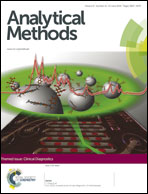Investigation of a novel method for quality control of Chinese herbal compound prescription: HPLC fingerprint and multi-index components combining blending technology control for quality stability of Zhou's prescription extract
Abstract
A novel method that combines high performance liquid chromatography (HPLC) fingerprint with blending technology was developed and validated for ensuring quality stability of Zhou's prescription extract. For fingerprint analysis, 32 peaks were selected as the common peaks by comparing the chromatograms of 15 batches of Zhou's prescription extracts. Meanwhile, these common peaks were identified by using electronic spray ion mass spectrometry. The batch, which contained herbs that were obtained from geo-authentic habitats during their best harvest times, was selected as the standard extract (SE). The quality difference between SE and 14 batches of Zhou's prescription extracts was evaluated by using the fingerprint similarity, relative deviation of content (RDC), hierarchical clustering analysis (HCA) and principal component analysis (PCA), and narrowed by applying blending technology that could lead to homogenization of high quality of the 14 batches of Zhou's prescription extracts by using nonlinear programming. According to the mode of finding difference and narrowing difference, the previous two kinds of quality control method was combined smartly to ensure the quality stability of Zhou's prescription. Finally, this method was verified and the results indicated that fingerprint similarities of 10 different blending schemes increased to the range of 0.9208 to 0.9797 from 0.7338 to 0.8925. The average RDCs of 28 index components decreased to the range of 0.1549 to 0.2790 from 0.4768 to 0.6083. The diagrams of HCA and PCA show that the 10 blending schemes were grouped with the standard Zhou's prescription extract. These results demonstrated that this new method is an efficient and reliable approach for ensuring quality stability of Zhou's prescription extract.


 Please wait while we load your content...
Please wait while we load your content...